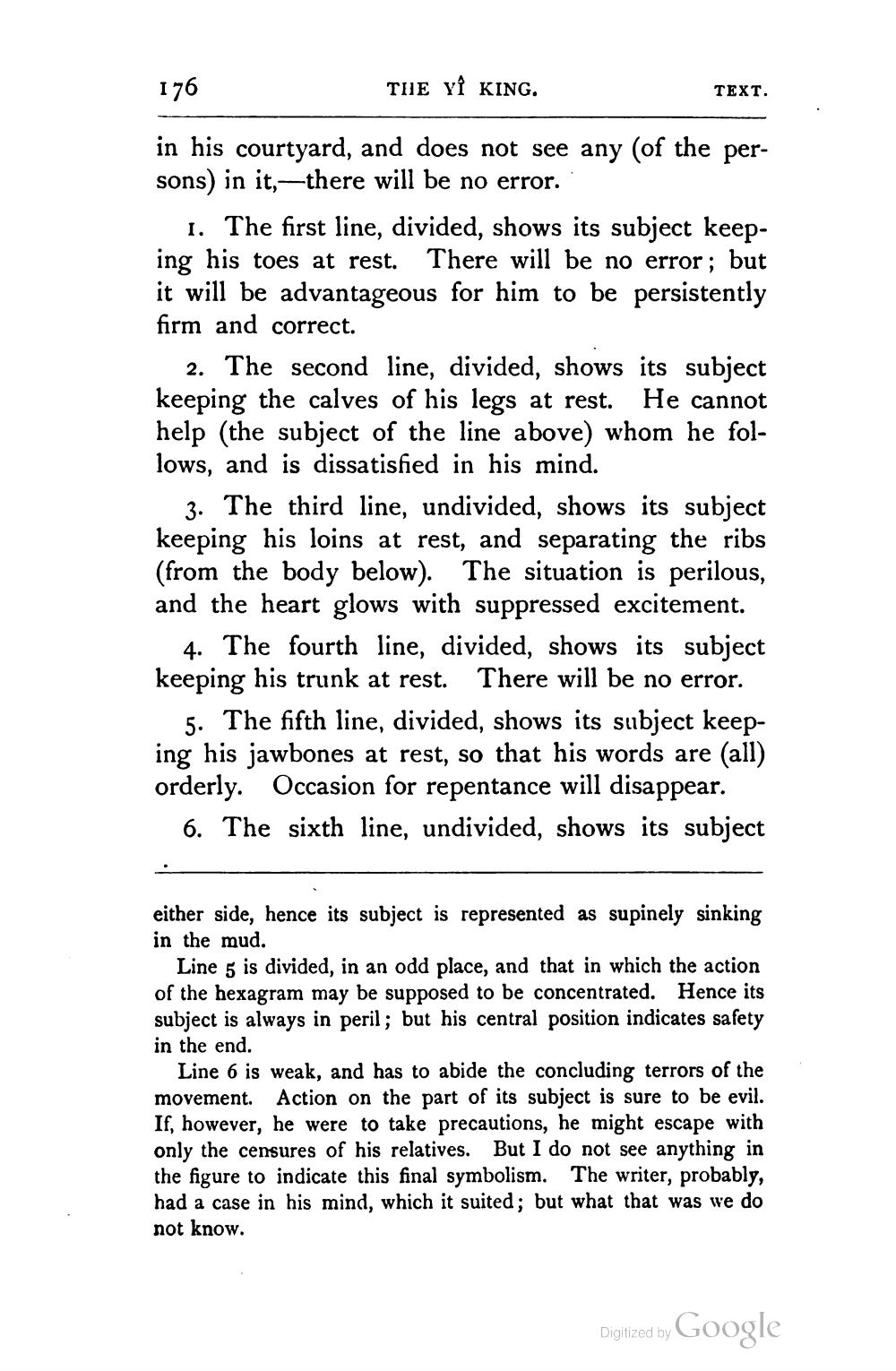________________
176
THE VÎ KING.
TEXT.
in his courtyard, and does not see any (of the persons) in it,—there will be no error.'
1. The first line, divided, shows its subject keeping his toes at rest. There will be no error ; but it will be advantageous for him to be persistently firm and correct.
2. The second line, divided, shows its subject keeping the calves of his legs at rest. He cannot help (the subject of the line above) whom he follows, and is dissatisfied in his mind.
3. The third line, undivided, shows its subject keeping his loins at rest, and separating the ribs (from the body below). The situation is perilous, and the heart glows with suppressed excitement.
4. The fourth line, divided, shows its subject keeping his trunk at rest. There will be no error.
5. The fifth line, divided, shows its subject keeping his jawbones at rest, so that his words are (all) orderly. Occasion for repentance will disappear.
6. The sixth line, undivided, shows its subject
either side, hence its subject is represented as supinely sinking in the mud.
Line 5 is divided, in an odd place, and that in which the action of the hexagram may be supposed to be concentrated. Hence its subject is always in peril; but his central position indicates safety in the end.
Line 6 is weak, and has to abide the concluding terrors of the movement. Action on the part of its subject is sure to be evil. If, however, he were to take precautions, he might escape with only the censures of his relatives. But I do not see anything in the figure to indicate this final symbolism. The writer, probably, had a case in his mind, which it suited; but what that was we do not know.
Digitized by Google




